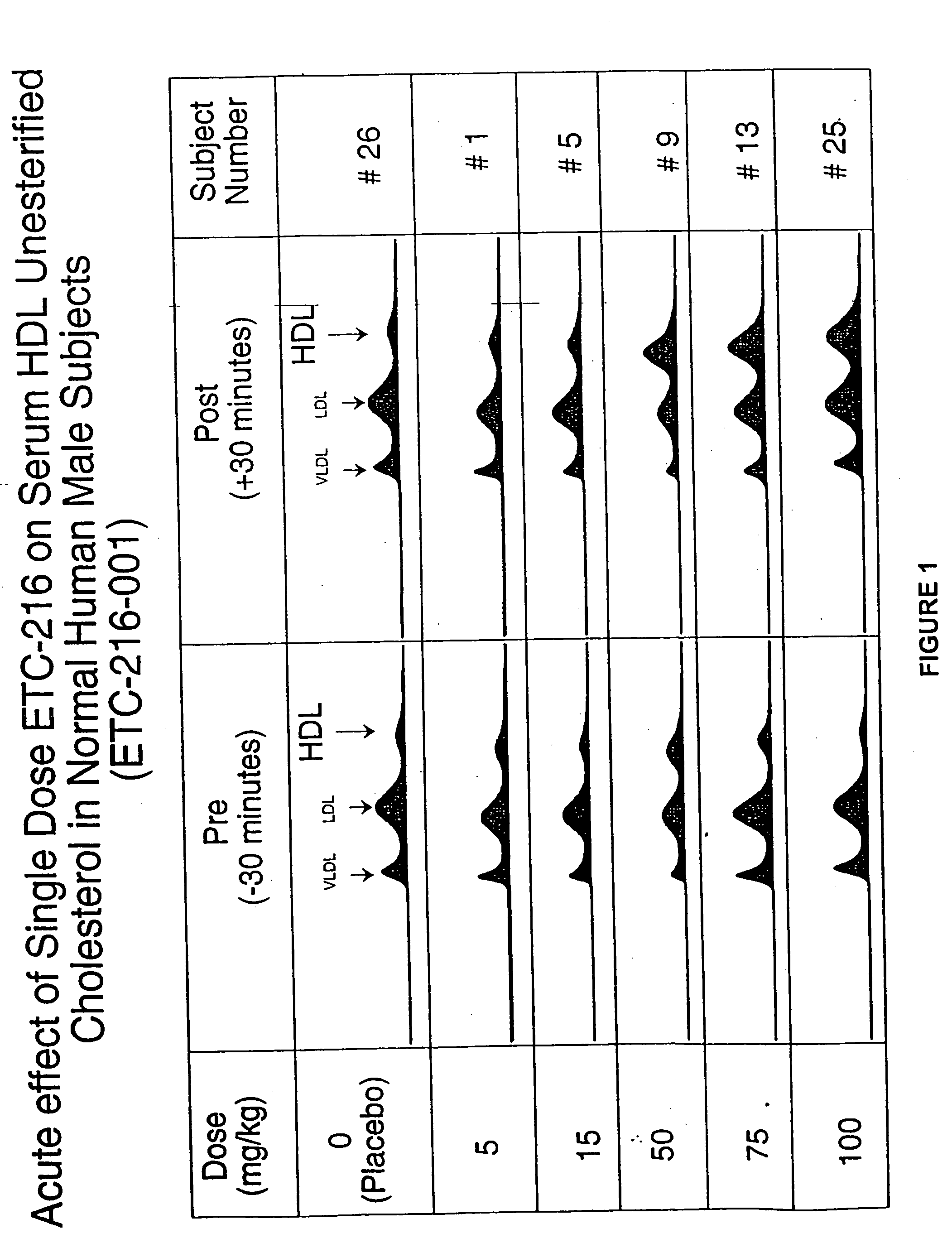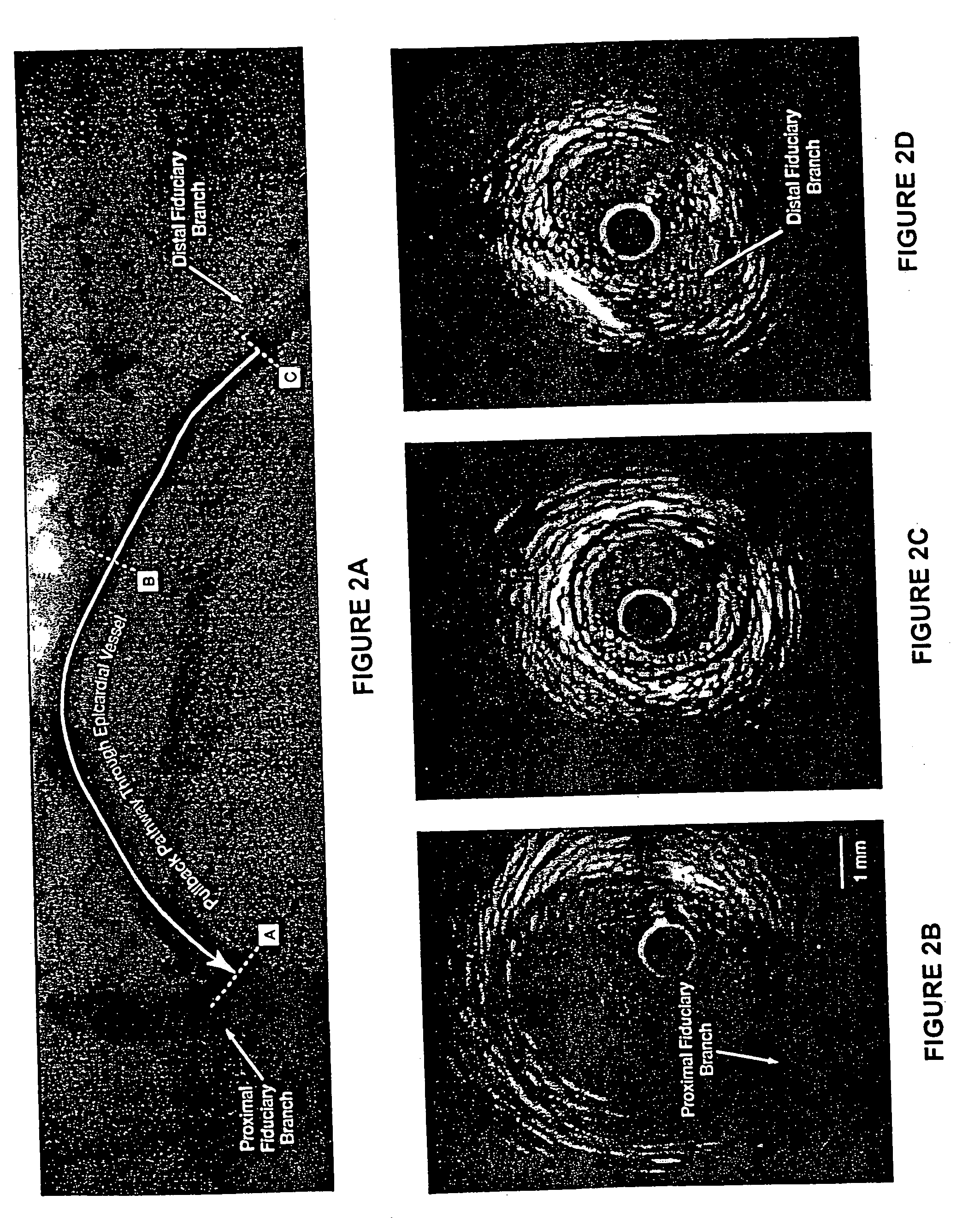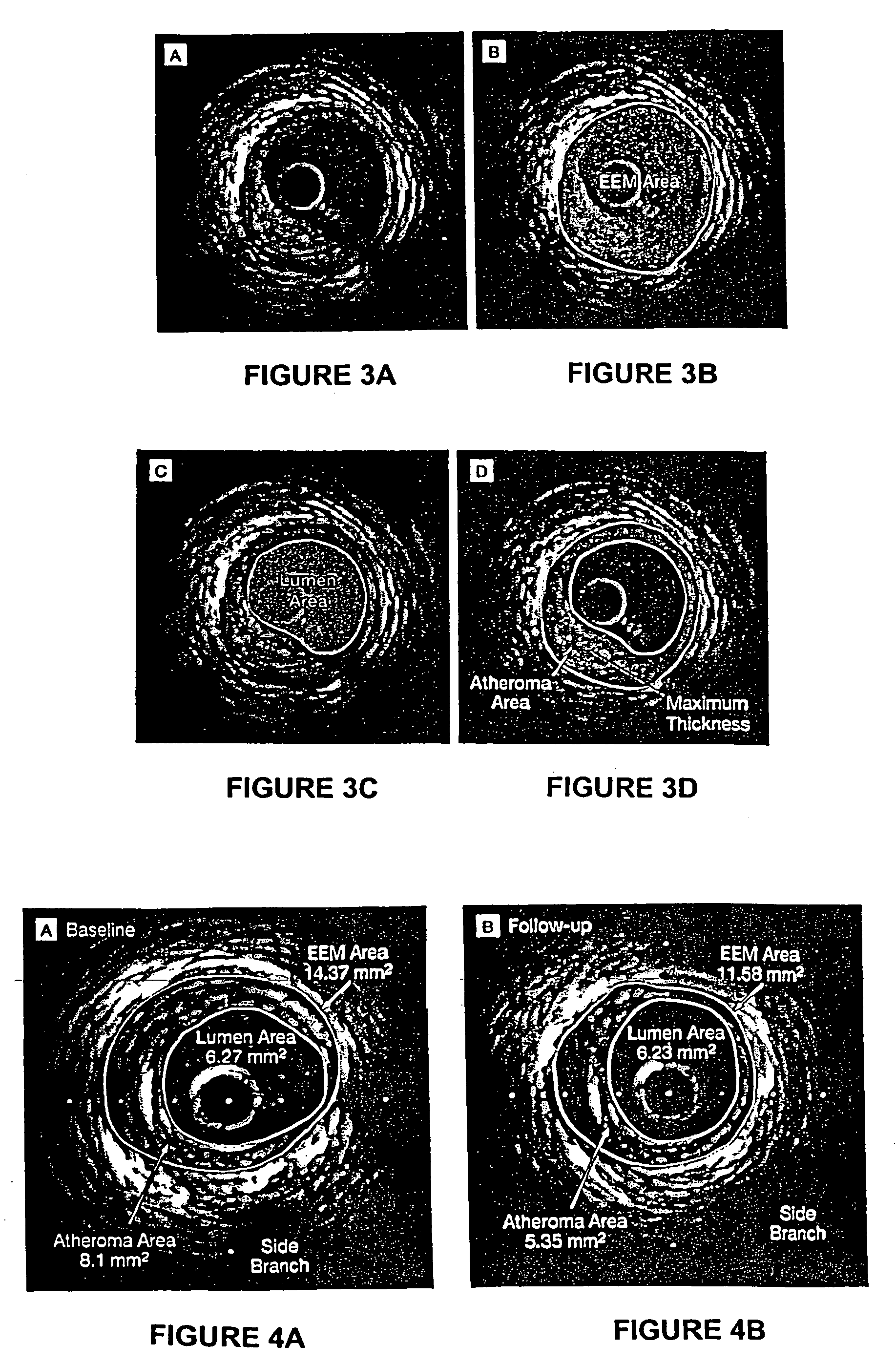Pharmaceutical formulations, methods, and dosing regimens for the treatment and prevention of acute coronary syndromes
a technology formulation, applied in the direction of peptide/protein ingredients, extracellular fluid disorder, peptide sources, etc., can solve the problems of acute coronary syndrome ischemic events including acute coronary syndrome, methods that do not provide non-surgical, pharmacologic treatment effective in an acute situation, etc., to reduce or stabilize atherosclerotic plaque, the effect of rapid action
- Summary
- Abstract
- Description
- Claims
- Application Information
AI Technical Summary
Benefits of technology
Problems solved by technology
Method used
Image
Examples
example 1
6.1. Example 1
Tolerability of ETC-216
[0154] This example demonstrates the safety and tolerability of ETC-216 in healthy volunteers.
[0155] A double-blind placebo-controlled study was conducted to determine the safety and tolerability of Apo A-I Milano and phospholipid. The Apo A-I Milano was complexed with a phospholipid (POPC) in a one to one weight ratio, referred to as ETC-216. The study evaluated the safety and tolerability of five escalating doses of a single intravenous infusion of ETC-216 in healthy male volunteers and at two different doses in healthy female volunteers. Informed consent was obtained from all volunteers prior to the study.
[0156] Thirty-two healthy volunteers (“subjects”) between the ages of 18-50 years of age were administered intravenous doses of ETC-216. In male subjects, doses up to and including 100 mg / kg were administered. In female subjects, doses up to and including 50 mg / kg were administered. The gender of the subject, dose and rate are provided bel...
example 2
6.2. Example 2
The Efficacy of Different Doses of ETC-16 in Regressing Atherosclerosis
[0163] This example demonstrates the efficacy of 15 mg / kg and 45 mg / kg doses of ETC-216 in regressing coronary atherosclerosis in subjects with acute coronary syndromes.
[0164] This study was a randomized, double-blind, placebo controlled multiple-dose study to evaluate the efficacy and safety of ETC-216 in subjects with acute coronary syndromes as assessed by intravascular ultrasound. Prior to the initiation of any study-specific procedure, all subjects gave informed consent approved by the Institutional Review Board (IRB) of each participating institution.
[0165] Eligible subjects were those diagnosed with acute coronary syndromes (unstable angina, non Q wave myocardial infarction or ST elevation myocardial infarction) within 14 days prior to screening and who were scheduled to undergo a coronary angiography and / or percutaneous coronary intervention (PCI) and anticipating 24-hour stay following t...
example 3
6.3. Example 3
Ex Vivo Langendorff
[0192] This example demonstrates the cardioprotective effect of prophylactic ETC-216 in the reperfused isolated ischemic rabbit heart. Male New Zealand White rabbits, obtained from Charles River weighing approximately 2-3 kg were used in the study. The male New Zealand White rabbit was selected as the appropriate test system for the purposes of this study. The isolated ischemic-reperfused rabbit heart is a model of human myocardial infarction. Upon arrival, animals were assigned unique identification numbers.
[0193] Animals were housed in stainless steel cages in accordance with the guidelines of the University of Michigan Committee on the Use and Care of Animals. Veterinary Care provided by the University of Michigan Unit for the Laboratory Animal Medicine. The University of Michigan is accredited by the American Association of Accreditation of Laboratory Animal Health Care, and the animal care use program conforms to the standards in the Guide for...
PUM
| Property | Measurement | Unit |
|---|---|---|
| Fraction | aaaaa | aaaaa |
| Fraction | aaaaa | aaaaa |
| Fraction | aaaaa | aaaaa |
Abstract
Description
Claims
Application Information
 Login to View More
Login to View More - R&D
- Intellectual Property
- Life Sciences
- Materials
- Tech Scout
- Unparalleled Data Quality
- Higher Quality Content
- 60% Fewer Hallucinations
Browse by: Latest US Patents, China's latest patents, Technical Efficacy Thesaurus, Application Domain, Technology Topic, Popular Technical Reports.
© 2025 PatSnap. All rights reserved.Legal|Privacy policy|Modern Slavery Act Transparency Statement|Sitemap|About US| Contact US: help@patsnap.com



